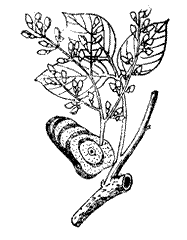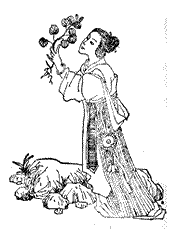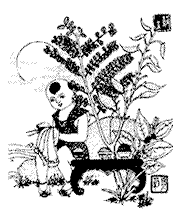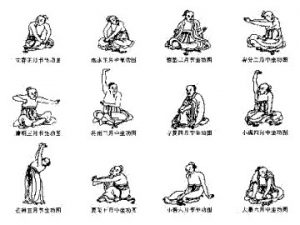Treating Progressive Spinal Muscular Atrophy (SMA) With Herbal Therapy Amyotrophy Convalesence Pill
1. What is Progressive Spinal Muscular Atrophy?
Spinal muscular atrophy (SMA) is a disease characterized by progressive degeneration of motor neurons in the spinal cord. The disorder causes weakness and wasting of the voluntary muscles. This weakness is often more severe in the legs than in the arms. Spinal muscular atrophy (SMA) affects the nerves in an area of the spinal cord called the anterior horn. These nerve cells become damaged, breaking the link between the brain and the muscles. As a result, the muscles can’t be used and become wasted or atrophied.
SMA affects the voluntary muscles (especially those closest to the trunk of the body) used for activities such as crawling, walking, head and neck control and swallowing.
| Video: Dr. Darryl De Vivo provides an overview of spinal muscular atrophy |
2. What Types There Are?
There are several different types of spinal muscular atrophy: type I (severe, also known as Werdnig-Hoffmann syndrome), type II (intermediate) and type III (mild, also known as Kugelberg-Welander disease) affect children, while there are a variety of types of adult-onset SMA that develop later in life.
Type I may begin before birth (lack of foetal movement in late pregnancy) or shortly afterwards, and an affected baby is rarely able to lift his head or develop normal movement. Swallowing, feeding and breathing may be difficult, and the child rarely survives to the age of two.
Type II usually appears in the first couple of years. The child may reach adulthood, although they may need help to sit or stand, and strain on the muscles can cause complications.
Type III may be diagnosed as late as adolescence. Those affected may have problems walking or getting up from sitting.
Unlike types I, II and III, which aren’t usually progressive, adult-onset SMA tends to progress very slowly, although it’s not usually life-threatening. Symptoms are variable and depend on the muscles affected. Fatigue may be a problem, but the muscles used for swallowing and respiratory function are rarely affected.
3. What Causes It?
Types I, II and III SMA are autosomal recessive conditions and affect boys and girls equally. It’s estimated that about 1 million people in the UK are carriers of SMA (about 1 in 50 people) and around one in 10,000 babies are affected.
Adult-onset SMA may be autosomal recessive, autosomal dominant or X-linked recessive (a form of SMA known as Bulbo-SMA or Kennedy’s syndrome). In a few cases, adult-onset SMA results from genetic mutations acquired during life rather than inherited.
4. How is spinal muscular atrophy diagnosed?
The diagnosis of spinal muscular atrophy is made after the sudden or gradual onset of specific symptoms and after diagnostic testing. During the physical examination, the physician will obtain a complete medical history of patients, and he/she may also ask if there is a family history of any medical problems.
Diagnostic tests that may be performed to confirm the diagnosis of spinal muscular atrophy include the following:
| 1. | Blood tests |
| 2. | Muscle biopsy – a small sample of the muscle is removed and examined to determine and confirm a diagnosis. |
| 3. | Genetic tests – diagnostic tests that evaluate for conditions that have a tendency to run in families. |
| 4. | Electromyogram (EMG) – a test that measures the electrical activity of a muscle or a group of muscles. An EMG can detect abnormal electrical muscle activity due to diseases and neuromuscular conditions. |
5. What is the Treatment?
Currently, there is no cure or treatment to repair the nerve damage, but support care including physio and respiratory drainage are very important. Within affected families, once the abnormal gene has been identified, carriers can be detected by a blood test, and antenatal screening using CVS (chorionic villus sampling) is available.
6. What is the prognosis?
The prognosis for individuals with SMA varies depending on the type of SMA and the degree of respiratory function. Some may appear to be stable for protracted periods, but improvement is not to be expected by using Western Medicine. .
For more information regarding spinal muscular atrophy (SMA) please visit http://en.wikipedia.org/wiki/Spinal_muscular_atrophy
7. Effective Chinese Herbal Medicine for Treating SMA
The following are main diagnosis points summed up by TCM
| 1. Modified Formula for Muscular Paralysis | |
| Indication: Spinal muscular atrophy (SMA) Preliminary Composition:  Radix Achyranthis 20g, Radix Angelicae Sinensis 20g, Fructus Chaenomelis 20g, Ramulus Mori 30g, Radix Aristolochiae Fangchi 15g, Lumbricus 20g, Scorpio 5g, Radix Codonopsis Pilosulae 20g, Rhizoma Atractylodis 20g, Semen Lablab Album 20g, Poria Cocos 20g Radix Achyranthis 20g, Radix Angelicae Sinensis 20g, Fructus Chaenomelis 20g, Ramulus Mori 30g, Radix Aristolochiae Fangchi 15g, Lumbricus 20g, Scorpio 5g, Radix Codonopsis Pilosulae 20g, Rhizoma Atractylodis 20g, Semen Lablab Album 20g, Poria Cocos 20gVariation: 1. For patients with symptom as weak lower limbs, inability for long time standing, dizziness, ear ringing, enuresis, fine pulse, which fall into category of liver deficiency , sparrow withered and sinew paralysed, add following herbs: Ramulus Loranthi 20g, Radix Dipsaci 20g, Semen Psoraleae 20g, 2. For patients with symptom as weakening limbs, poor appetite, belly distention, short breath, fatigue, pale complexion, which fall into category of deficiency of both spleen and stomach, stagnant transformation of essence, add following herbs: Fructus Amomi 30g, Pericarpium Citri Reticulatae preparata 20g 3. For patients with symptom as heavy body, fever, short and yellow urination, yellow tongue fur, tidal heat arising from below, which fall into category of prevailance of both swampness and heat, stagnant movement of both Qi and blood, add following herbs: Cortex Phellodendri 15g, Rhizoma Atractylodis Lanceae 15g, Radix Salviae Miltiorrhziae 30g, Celosia cirstata 15g, 4. For patients with symptom as vexation, thirst, dry stool, short and yellow urination, inner driness due to heat inside, which fall into category of liquid deficiency by heat with lung, less nourishment towards sinew, add following herbs: Semen Persicae 20g, Rhizoma Anemarrhenae 20g, Radix Rehmanniae preparata 20g, Gypsum Fibrosum 20g. Administration: Decocted with water. On time daily. Clinical Fact Sheet 28 received the treatment. Among them 12 gained much improvement, 5 gained minor improvement. |
|
| 2. Gui Long Paralysis Removal Formula | |
| Indication: Spinal muscular atrophy (SMA), Multiple Sclerosis (MS), ALS Preliminary Composition:  Carapax Et Plastrum Testudinis Preparata 15g, Draconis Os Preparata 15g, Hydrocotyle sibthorpioides 9g, Herba Cynomorii 12g, Rhizoma Polygonati Officinallis 12g, Radix Ophiopogonis 9g, Radix Achyranthis 9g, Rhizoma Dioscorea Batatis 20g, Rhizoma Atractylodis 9g, Poria Cocos 9g, Radix Pseudostellariae 3g Carapax Et Plastrum Testudinis Preparata 15g, Draconis Os Preparata 15g, Hydrocotyle sibthorpioides 9g, Herba Cynomorii 12g, Rhizoma Polygonati Officinallis 12g, Radix Ophiopogonis 9g, Radix Achyranthis 9g, Rhizoma Dioscorea Batatis 20g, Rhizoma Atractylodis 9g, Poria Cocos 9g, Radix Pseudostellariae 3gVariation: 1. For patients with much heat, add following herbs: Gypsum Fibrosum, Rhizoma Anemarrhenae, Caulis Lonicerae 2. For patients with much dampness, add following herbs: Rhizoma Atractylodis Lanceae, Semen Coicis 3. For patients with lower limbs paralysis, add following herbs: Fructus Chaenomelis, tiger bone 4. For patients with waist and back impediment involved, add following herbs: Cortex Eucommiae preparata, Gou Ji 5. For patients with deficiency of both Qi and Yin, add following herbs: Radix Astragali preparata, Fructus Schizandrae Administration: Decocted with water. On time daily. Clinical Fact Sheet Effective rate: 84% |
|
| 3. Formula for Recovery from Paralysis | |
| Indication: Spinal muscular atrophy (SMA), muscular paralysis. Preliminary Composition: Radix Astragali preparata 20g, Rhizoma Anemarrhenae 12g, Ye Tai Ginseng 9g, Rhizoma Atractylodis Macrocephalae 9g, Radix Angelicae Sinensis 9g, Olibanum 9g, Ardisia japonica 9g, Radix Clematidis 5g, Rhizoma Zingiberis Siccatum 6g, Radix Achyranthis 12g Variation: For patients with much heat, add Gypsum Fibrosum; with coldness, minus Rhizoma Anemarrhenae, add Radix Aconiti Lateralis Preparata; with bone and sinew suffering from wind, add Rhizoma Gastrodiae; with bone withered, add Hydrocotyle sibthorpioides, tiger bone; with both withered feet and hands, add Ramulus Cinnamomi |
|
8. Chinese Herbal Medicine Treatment
By applying Amyotrophy Convalesence Pill Series Medicine, till now the out-patients with progressive spinal muscular atrophy (SMA) amounted to 194 in Ghangcheng Myelophathy Hospital, among them 137 are male and 54 female. The oldest patient aged 63, the youngest is 5 years old. The effective rate (improvement rate) is 77.3%. Here we list two cases for study:
| Case One | |
Chen Hutian, male, 24, bus driver. Shanshui village, AnYang County Henan Province. From April 1989 on began to feel numb with right arm, later found muscular atrophy with right deltoid, the movement ranges of right arm deterred and such conditions became worse as to develop the atrophy of the interosseous muscles of the hand. The muscle weakness deteriorated. The former medical reports show the Progressive Spinal Muscular Atrophy (SMA). Took Amyotrophy Convalescence Pill series medicine for three months and reported as the muscular atrophy stop to deteriorate and the movement range of right arm be expanded. After 5 months the muscle function of the hypothenar and thenar, detoid muscle, interosseus recovered 80%. Continued to take the medicine for another 2 months and all returned normal and began his driver work as before. From April 1989 on began to feel numb with right arm, later found muscular atrophy with right deltoid, the movement ranges of right arm deterred and such conditions became worse as to develop the atrophy of the interosseous muscles of the hand. The muscle weakness deteriorated. The former medical reports show the Progressive Spinal Muscular Atrophy (SMA). Took Amyotrophy Convalescence Pill series medicine for three months and reported as the muscular atrophy stop to deteriorate and the movement range of right arm be expanded. After 5 months the muscle function of the hypothenar and thenar, detoid muscle, interosseus recovered 80%. Continued to take the medicine for another 2 months and all returned normal and began his driver work as before. |
|
| Case Two | |
| Kang Fuji, male, 25, technician. On June 27, 1995 he came to receive treatment. Fasciculation 1 year, unable to use hand to write, atrophy with right forearm muscle, atrophy of the interosseous muscles of the hand, atrophy with the thenar and hypothenar. EMG showed damage of motor neurons and diagnosis as SMA. Took Amyotrophy Convalescence Pill series medicine 3 months the hand can grasp the pen for simple drawing. Five months later the muscular atrophy disappeared. |
|
9. Combination Treatment: Qigong Practice
9-1. Mechanism
Qigong, an ancient science and art of health, is a traditional form of Chinese energy excise and healing art for the body, mind, and spirit. Qigong is for establishing balance in and for helping to heal people who are struggling with chronic degenerative conditions such as paralysis, cancer, asthma, cardiovascular and so on.
 People will ask us what the mechanism of qigong is. Generally speaking, like in a rice field, western medicine always have the trend of using all their means to kill the weeds. But in the meantime the rice shoots incur damage, more or less. Most patients know what the results is when they receive radiotherapy and chemotherapy. But for qigong practice, at beginning it will directly strengthen patients immune system as well as activate inner energy system. In a word, it seeks to harmonize the relationship of all internal organs rahter than distinguish which is friend and which is enemy. How to achieve such aim, you may ask? For a tree, at the very beginning there is no division of which is normal and which is abnormal for it stays at initiative stage of the very root. But later different branches develop into various forms, and good, bad, long, short, etc. come into being. By adopting special means we can reverse the process of growth and take the course of sailing against the life current to return back to the very beginning. Once we reach that state there should be no any “branches” possibly existing to wield effects upon our physical existence. Qigong is just the method of how to take the reversing course for the health well being, physically and mentally.
People will ask us what the mechanism of qigong is. Generally speaking, like in a rice field, western medicine always have the trend of using all their means to kill the weeds. But in the meantime the rice shoots incur damage, more or less. Most patients know what the results is when they receive radiotherapy and chemotherapy. But for qigong practice, at beginning it will directly strengthen patients immune system as well as activate inner energy system. In a word, it seeks to harmonize the relationship of all internal organs rahter than distinguish which is friend and which is enemy. How to achieve such aim, you may ask? For a tree, at the very beginning there is no division of which is normal and which is abnormal for it stays at initiative stage of the very root. But later different branches develop into various forms, and good, bad, long, short, etc. come into being. By adopting special means we can reverse the process of growth and take the course of sailing against the life current to return back to the very beginning. Once we reach that state there should be no any “branches” possibly existing to wield effects upon our physical existence. Qigong is just the method of how to take the reversing course for the health well being, physically and mentally.
As like to let the rice shoots get stronger and stronger, the weeds will have less and less effects upon the rice shoots. As the process continues, it is sure someday the weeds will no longer have effect upon the rice shoots. Later the time will come of the rice shoots overpowering weeds. If patients can properly proceed with the practice, qigong can bring them much more than they could expect, especially the serene happiness common people could never have chance to experience throughout their life time. Qigong is the study of practice rather than just a theory. Here we like to offer free Qigong course to all patients.
9-2. Qigong Course in DVD Format
We’d like to offer free DVD training course to patients who buy our medicine and have interest in practicing the art. Also, people should know before hand that such practice is for the patients who cannot sit cross-legged and cannot stretch their arms. Such materials can be sent by emails and is easy to get. We’d like to offer suggestion to practitoners when they encounter any problem with such self practice. They are advised to practice the art every day, together with the Amyotrophy Convalescence Pill Series medicine prescribed by doctors. For more information regarding I-Chi Qigong practice please click here
9-3. Correspondence Course
For patients who are able to move their arms and sit cross-legged please try DaMo Qigong Correspondence Course. Such correspondence course contains 4 DVDs (MPEG format, can play at most DVD Player and computers with Windows system or OS), the book The Way To Eternity and Correspondence Course. The video discs contain qigong master’s teaching for 49 postures which is the first step of Laying Foundation and it is a very complicated series practice. Follow the practical teaching practitioners can personally know how to proceed with the practice, step by step.
By mastering the essentials of Qigong practice, many people with chronic diseases such as ALS, MG, SM, diabetes, general weakness, colitis, etc. can us such internal healing arts to heal themselves with assistance from some herbal medicine. For more information please click here.
9-4. WudangTaoist Alchemy, Qigong & Tai Chi Workshops
Wudang Taoist Internal Alchemy, Qigong & Taichi Workshops will be held everyyear during September 9-25, at Mount Wudang, one birth place for Chinese Taoism and Taoist inner alchemy practice.
Such workshop offers the classes teaching from Qigong, Daoyin, I-Ching, Chinese astrology (Big Liu Ren), meditation, Taoist yoga, Taoist inner alchemy, Buddhism and the essence of consciousness. So, people can learn not only the practical health preservation approaches, but also the Taoist and Buddhist philosophy. It can tremendously open people’s mind to reach a very high level while help people master the most valuable self-healing arts for treat many chronic diseases. For more details please Click Here
Yes, we also teach medical Qigong, including external Qi, diagnosis, and self-healing arts. As to the details of the teaching coverage please read the simplified workbook at HERE
Ghangcheng Myelophathy Hospital
- 189 Dongfeng Road LiChuan District, Enshi City Hubei Province, China 445000
